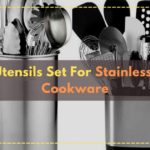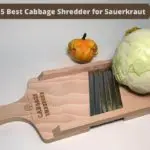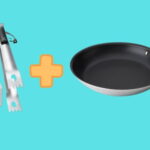Can you use stainless steel utensils on Nonstick cookware?
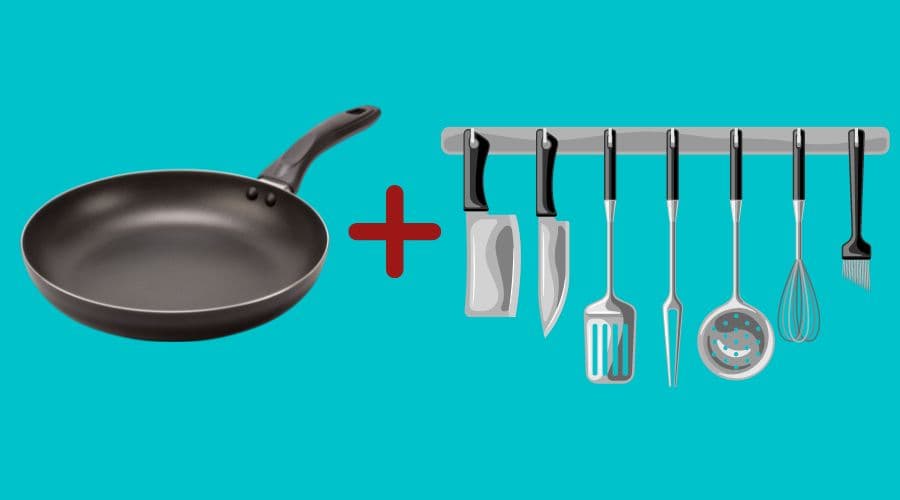
Due to several reasons, nonstick cookware is a popular choice. It is easy to clean and has a nonstick surface that lets you cook food without sticking. However, this type of cookware needs to be used with the right utensils in order to preserve the non stick properties.
Can You Use Stainless Steel Utensils On Nonstick Cookware?
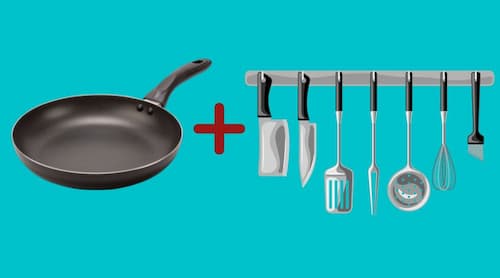
Nonstick cookware can be used with stainless steel utensils, but this is not recommended. The nonstick coating may become scratched by the stainless steel’s rough surface, reducing its effectiveness and causing food to stick. Using stainless steel utensils on nonstick cookware could also lead to the cookware becoming damaged over time which may in turn lead to health issues.
To keep your nonstick cookware last longer, use utensils that are specifically designed for nonstick cookware such as wooden, silicone or coated utensils. These materials used to make these utensils are made are much softer and won’t scratch the surface of your cookware.
In this post I will discuss Why you can’t use Stainless Steel Utensils On Nonstick Cookware? And what is the safe method to use metal utensils with nonstick cookware? and how to avoid damaging your nonstick cookware?
So, without further ado-Let’s get started!
Why can’t we use the stainless steel utensils on nonstick Pans?
Nonstick cookware should not be used with stainless steel utensils for various reasons. To begin, the nonstick surface could be damaged by the rough surface of the stainless steel. The cookware’s performance may suffer. As a result, making cleanup more challenging.
Second, the nonstick surface’s heat transfer to the stainless steel can be harmful. Over time, this could harm the nonstick coating, making it more likely that your meal will get flaked. Moreover, metal utensils may increase the likelihood of nonstick surface discolouration and damage.
Thirdly, using nonstick cookware with stainless steel utensils can cause them to flex or bend, further harming the cookware. The dents and warps caused by the utensils’ weight and pressure can make cooking difficult.
Finally, the warranty may be void if the wrong tools are used with nonstick cookware. Most warranties stipulate that only non metallic utensils should be used to protect the nonstick surface.
Why Can’t We Use Stainless Steel Utensils On Nonstick Cookware?
1. The nonstick surface could be damaged by the steel utensils.
The nonstick coating is delicate and can be easily scratched, especially if metal utensils are used which are too hard for the surface. This will eventually lead to food sticking and flaking off the cookware, reducing its lifespan.
Using stainless steel utensils on nonstick pan can cause damage to the nonstick surface, as well as potential health risks. Stainless steel is harder and heavier than the lightweight aluminum or plastic utensils that are often recommended for use with nonstick cookware.
Using these hard utensils increases the risk of scratches and chips in the nonstick surface, reducing its effectiveness.
2. Heat transfer from the stainless steel utensils can harm the nonstick coating
Heat from the stainless steel utensils can harm the nonstick coating because stainless steel is a better conductor of heat than other materials, including nonstick. This means that when stainless steel utensils are placed in contact with a non-stick cooking surface, heat will be transferred more quickly and at higher temperatures than it would with other types of utensils.
This can also cause the nonstick coating to break down more quickly, leading to it becoming cracked, flaked and eventually even melted away.
3. The utensils may flex or bend, causing dents and warps to the pan
When stainless steel utensils are used on nonstick cookware, they can apply too much pressure or weight to the surface. The materials that make up nonstick cookware are softer than those of stainless steel, so when the utensil is pressed against it, the softer material may chip or scratch the coating.
4. Damage coating will make it less effective as well as harmful for you
Damage to the nonstick coating can render it less effective in terms of cooking, as well as potentially dangerous for you. The coating is designed to keep food from sticking and burning on the surface, but when it is scratched or chipped, this effect will be reduced.
What Utensils Are Safe To Use with Nonstick Cookware?
Utensils made of materials that has soft surface should be used when cooking with nonstick cookware. The nonstick coating is less likely to be damaged or scratched by silicone, plastic, or wooden utensils, so these are the preferred options. Moreover, they are light and won’t scratch the surface; plastic utensils are another great choice.
Furthermore, wooden utensils are also regarded as the popular choice as they do not react with the cookware and are soft on a nonstick surface. Thus, these materials are an excellent alternative to stainless steel, which cannot harm nonstick cookware and are safe to use.
Check some of the Best Utensils Set for Nonstick Cookware.
Tips for Safely Using Stainless Steel Utensils on Nonstick Cookware
1. Use rubber, silicone or wooden utensils whenever possible when cooking on nonstick pans. These materials are much gentler than metal and won’t scratch or damage the nonstick coating.
2. Soft-tipped stainless steel spatulas can be used safely with nonstick cookware, but avoid using any sharp-edged utensils to scrape the surface of your cookware.
3. When using stainless steel utensils on nonstick cookware, make sure to avoid pressing too hard when stirring or scraping food. This can cause damage to the nonstick coating.
5. Invest in a good quality stainless steel utensil set with soft tips and rounded edges to minimize damage to your nonstick pans.
Conclusion
I hope you might get the answer of your question, Can I use Metal Utensils with Nonstick pans?
Taking care of your nonstick cookware regularly, using the right tools and handling it gently will help it last longer and preserve its non stick properties.
Since nonstick cookware is gentler on the surface and less likely to cause damage, it should be used in conjunction with silicone, plastic, or wood utensils.
Utensils made from silicone, plastic or wood are much gentler on the surface and should be used to preserve your nonstick cookware.
The above tips will help ensure your nonstick cookware remains in good condition for many years to come.


